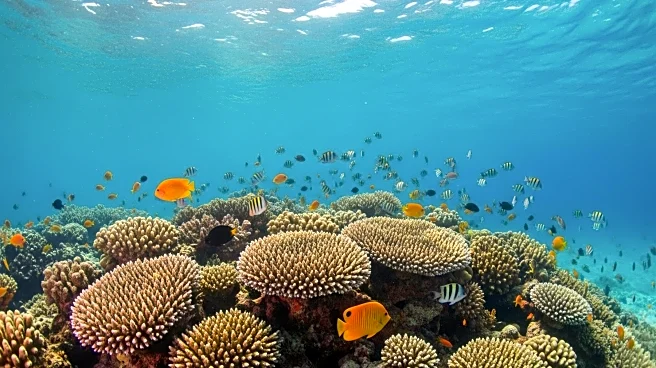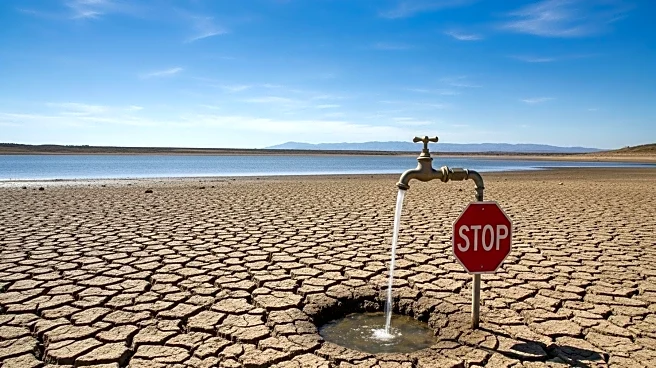What's Happening?
Recent weather events in the UK have underscored the impact of climate change and human activities on the environment. Heavy rainfall has led to significant flooding in Swansea, particularly affecting the Cwmbwrla roundabout, a major route into the city. South Wales Police have closed the road and diverted traffic, while the South Wales Fire and Rescue Service is managing multiple flooding incidents in areas such as Killay, Cwmbwrla, and Manselton. The Met Office has issued a yellow weather warning for Wales, effective from Sunday evening to Monday evening, with Natural Resources Wales maintaining three flood warnings. Additionally, marine ecosystems around the Isles of Scilly have shown resilience despite national trends of degradation.
Why It's Important?
These events highlight the varied impacts of climate change and human activities on the UK's environment. The flooding in Swansea disrupts local transportation and poses challenges for emergency services, emphasizing the need for effective urban planning and infrastructure resilience. The resilience of marine ecosystems around the Isles of Scilly offers a glimmer of hope, suggesting that some natural environments can withstand adverse conditions. These observations are crucial for policymakers and environmentalists as they address climate change and its effects on both urban and natural settings.
What's Next?
Authorities will likely continue to monitor weather conditions closely and respond to any further incidents of flooding. The resilience of marine ecosystems may prompt further research into protective measures that can be applied elsewhere. Policymakers may also consider revising infrastructure and urban planning strategies to better cope with extreme weather events, ensuring public safety and minimizing disruption.
Beyond the Headlines
The flooding and weather warnings in Wales serve as a reminder of the broader implications of climate change, including the need for sustainable practices and policies. The resilience of certain ecosystems could inform future conservation efforts, highlighting the importance of preserving natural habitats. These developments may also influence public perception and drive greater advocacy for environmental protection.











